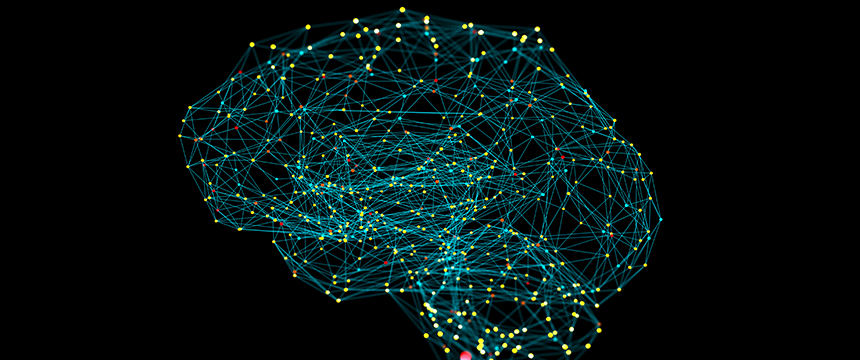
The United States Patent and Trademark Office (USPTO) published a report digesting the feedback it received concerning issues of patent policy for artificial intelligence (AI) technologies.
The report, “Public Views on Artificial Intelligence and Intellectual Property Policy,” summarizes the public responses to the USPTO’s Request for Comments (RFC) published August 27, 2020. The USPTO received a total of 99 responses from a variety of stakeholders, including professional organizations, private companies, law firms, academia, and trade associations. Below are four notable takeaways from the report.
1. There is a Consensus that U.S. Patent Law is Equipped for AI Technology
A majority of commenters “expressed a general sense” that U.S. patent law is “calibrated correctly” to “address the evolution of AI technologies.” The commenters consider AI inventions as just another flavor of computing technology, like robotics, Internet of Things (IoT) devices, mobile apps, or cloud-computing. Though some areas of the Patent Act are subject to debate, the majority believes the statute includes the provisions needed to govern computer-related inventions, including AI technologies.
For example, the majority feels that “current USPTO guidance, especially on patent subject matter eligibility and disclosure of computer-implemented inventions, is equipped to handle advances in AI,” given that the majority believes that “AI is viewed best as a subset of computer-implemented inventions.”
Many commenters believe that “new classes of IP rights would be beneficial to ensure a more robust IP system.” AI technologies typically involve input/output datasets or they are embodied in various forms of data, such as trained AIs, training datasets, and AI outputs, among others. Opinions advocating for new types of IP rights “focused on the need to protect the data associated with AI,” fearing gaps in protection for AI-related data.
Nevertheless, the commenters believe that US patent law is capable of handling AI inventions for the foreseeable future. Even though certain aspects of patent law are under scrutiny, do not expect to see changes to the law geared specifically to AI technologies.
2. The USPTO Injected Two New Categories of AI into the AI Discourse: “Narrow” AI and “Artificial General Intelligence” (AGI)
The RFC sought a definition for the defining elements of AI. But commenters were generally uncomfortable offering anything so definitive. The feeling is that AI’s dynamic nature makes crafting a definition of AI impractical, unhelpful, or at best moot, since the technology (and any definition) will eventually be subjected to unforeseeable and fundamental changes over time. Accordingly, commenters cautioned against a strict definition of the term “AI” in IP policy.
Interestingly, the USPTO observed that the responses generally categorized AI in two ways. The first category is “narrow” AI, which is the application-specific, objective-driven AI technology of today. Narrow AI systems perform tasks in “well-defined domains.”
The other category is Artificial “General” Intelligence (AGI), which the USPTO describes as the theoretical condition where technology has “intelligence akin to that possessed by humankind and beyond.”
The majority of commenters noted that current AI technologies are narrow AI and generally covered by existing patent law. Current patent law, however, might not adequately address AGI, whenever it arrives. Many responses offered a caveat that AGI’s arrival is likely to prompt reconsideration of opinions and patent policies.
AI inventorship is an example of how theoretical AGI could disrupt patent policy. The USPTO recently rejected a patent application (dubbed the “DABUS application”) listing an AI program as the inventor. The USPTO rejected the application because, in its view, patent law only contemplates humans as inventors. This result is unsurprising given that AGI simply does not exist yet, and AI cannot conceive of an invention as a human would. In the responses, commenters generally agreed that the arrival of AGI (or a court acknowledging AI inventorship) could require reconsideration of patent policies such as AI inventorship.
These two new classes of AI technology help shape the ongoing discourse. Parties can now discuss AI patent policy in terms of “narrow AI” for the current reality, while keeping “AGI” at arm’s length from the ongoing conversation.
3. Some Concerns over Defining “Person of Ordinary Skill in The Art” Definition
Commenters raised concerns over defining what it means to be a person having ordinary skill in the art (POSITA), which is an evaluation criterion applied in several areas of patent law. For example, to satisfy 35 U.S.C. § 112(a), a patent application must describe an invention with enough detail that a POSITA would believe the inventor had possession of the invention (the “written description” requirement) and would be able to make or use the invention without undue experimentation (the “enablement” requirement). As another example, a patent application is unpatentable if the invention would have been obvious to a POSITA in view of the prior art at the time the application was filed. Broadly speaking, the concern is that the growing ubiquity of AI could prematurely raise the bar for defining a POSITA.
The legal tests that apply the POSITA standard adapt organically to increased complexity over time, usually by raising the fictional person’s level of skill and knowledge to accommodate for an increased body of literature and increased sophistication. For enablement under § 112(a), the amount of detail “needed in the specification to enable the invention is inversely related to the amount of knowledge in the state of the art, as well as the predictability in the art,” as measured against a POSITA. Similarly, for obviousness under § 103, a POSITA is presumed to know the relevant prior art and is the baseline for evaluating whether an invention would have been predictable.
The concern is that the ubiquitous presence of AI in disparate fields (e.g., life sciences, robotic systems, agriculture, manufacturing processes) could affect the POSITA’s level of skill where AI’s presence is tangential or employed as a tool for invention. Commenters generally agreed that, for a given field, the present legal framework for assessing the POSITA is “adequate to determine the impact of AI-based tools.”
Commenters seemingly diverged when considering the POSITA’s level of skill across disparate fields. Many responses highlighted that “the level of skill in any art has traditionally grown over time based on the introduction of new technologies,” suggesting there was little concern. But a handful of responses “cautioned that such wide prevalence of AI systems has not yet permeated all fields” and “counseled against declaring that all fields of innovation are now subject to AI.”
The question of how to properly define the level of skill of POSITA with respect to AI remains unresolved at the moment. But it may be moot given the speed of AI adoption across the spectrum of commercial and research fields. Soon enough, a POSITA will be expected to understand the implementations and impact of AI for most fields.
4. The Consensus is that AI Generally does not Impact Prior Art
A majority of commenters stated that there were no unique prior art challenges with respect to AI. Existing guidance and policies directed to computer-implemented inventions should be applied similarly to AI inventions. This follows the general sense that AI inventions should be treated as a subset of inventions for computing-technologies.
Still, a minority of commenters noted that AI inventions could spark unique prior art issues. For example, some commenters mentioned that AI could be used to generate and proliferate “a never before seen volume” of prior art. An AI could be configured to stitch together various related concepts to automatically generate and publish prior art. This would disrupt the evolution of what is actually known or obvious in the art.
Another issue raised by commenters is the difficulty of obtaining AI source code. So even if a prior art AI already exists, it would be difficult to prove that the prior art AI satisfies the legal requirements to preclude patentability or invalidate a patent.
One common theme among commenters was the importance of examiner training. Some commenters referred to adjustments made by other patent offices, suggesting that the USPTO be informed by relevant policies in foreign offices. For example, the Japan Patent Office (JPO) and Korean Patent Office (KIPO) have established separate and specific “AI Examination Groups,” and the Intellectual Property Office of Singapore (IPOS) created an expedited examination path for AI technology. On the other hand, one commenter cautioned against “harmonizing” USPTO policies and procedures with other offices because “U.S. patent law has long been the gold standard for patent protection and a major driver in the success of the U.S. innovation economy.”
